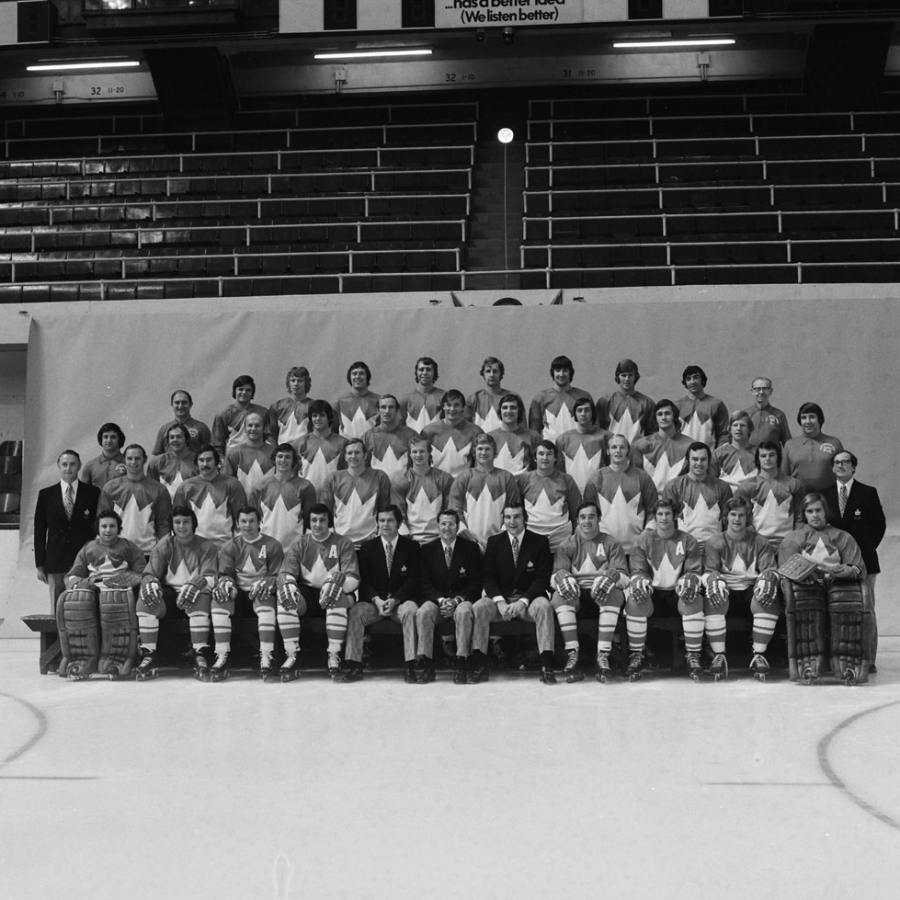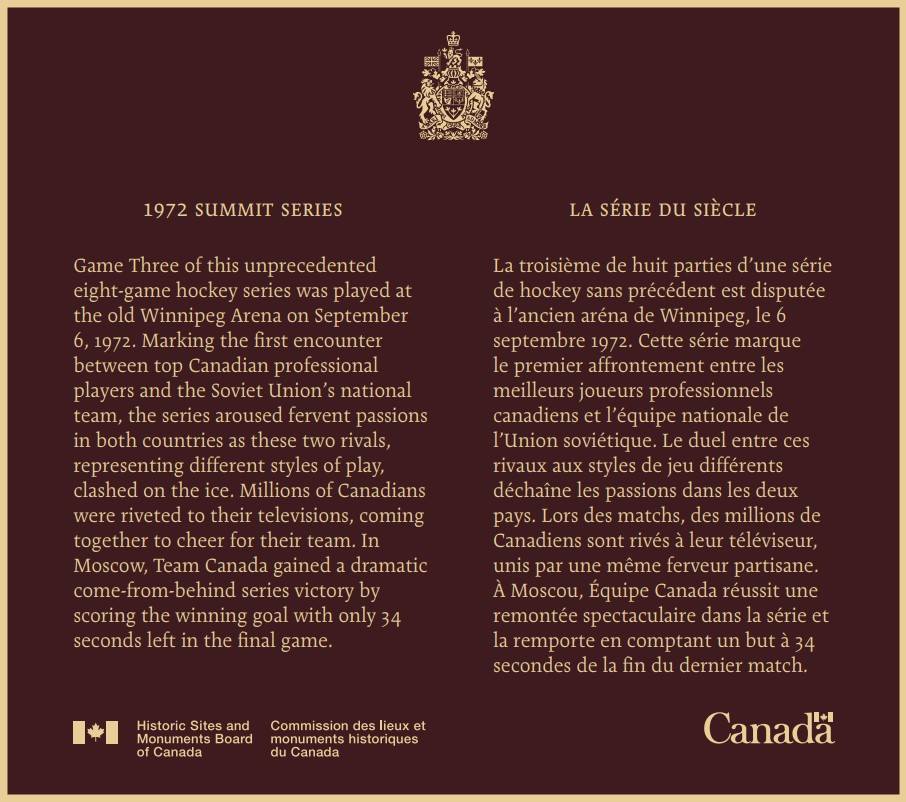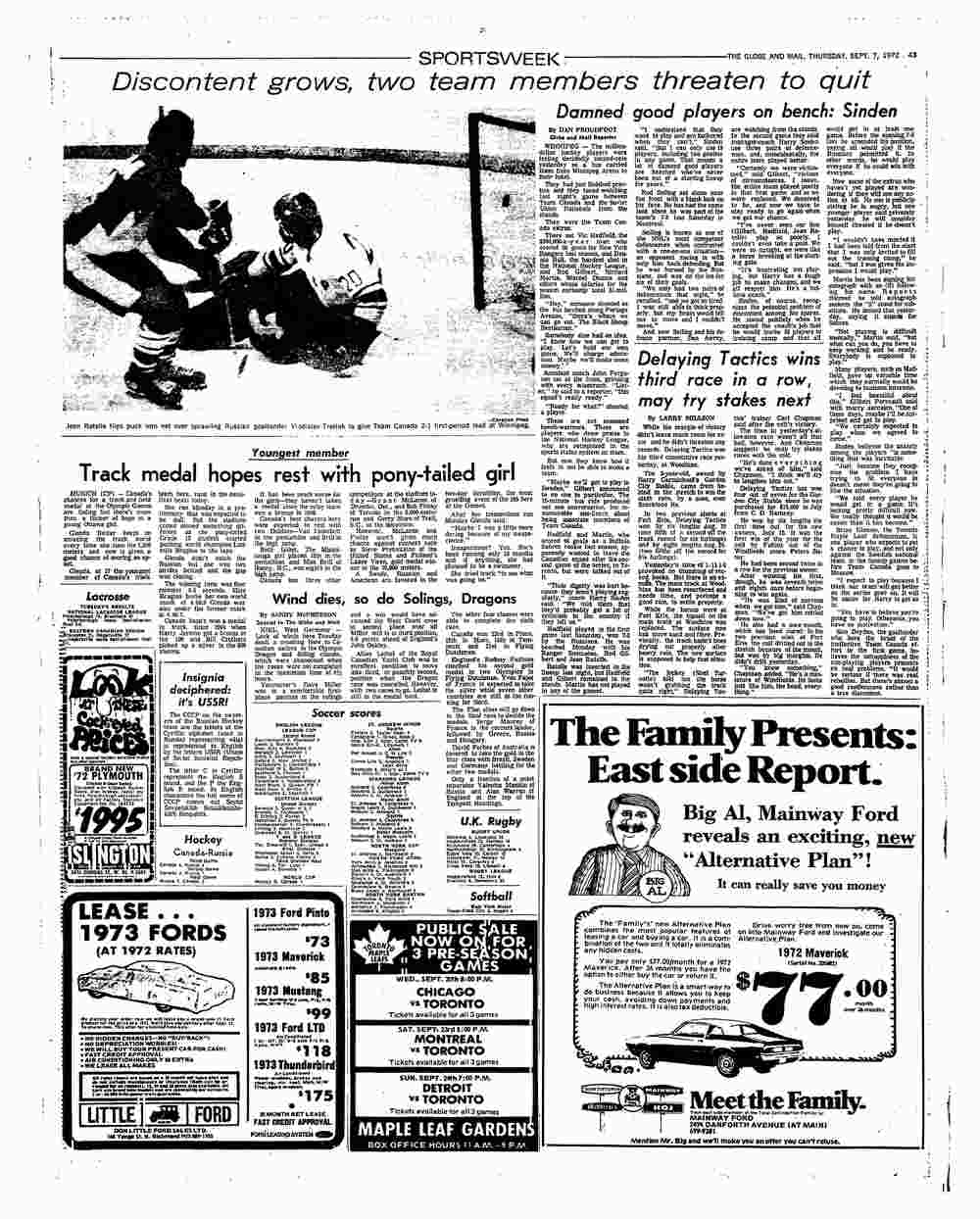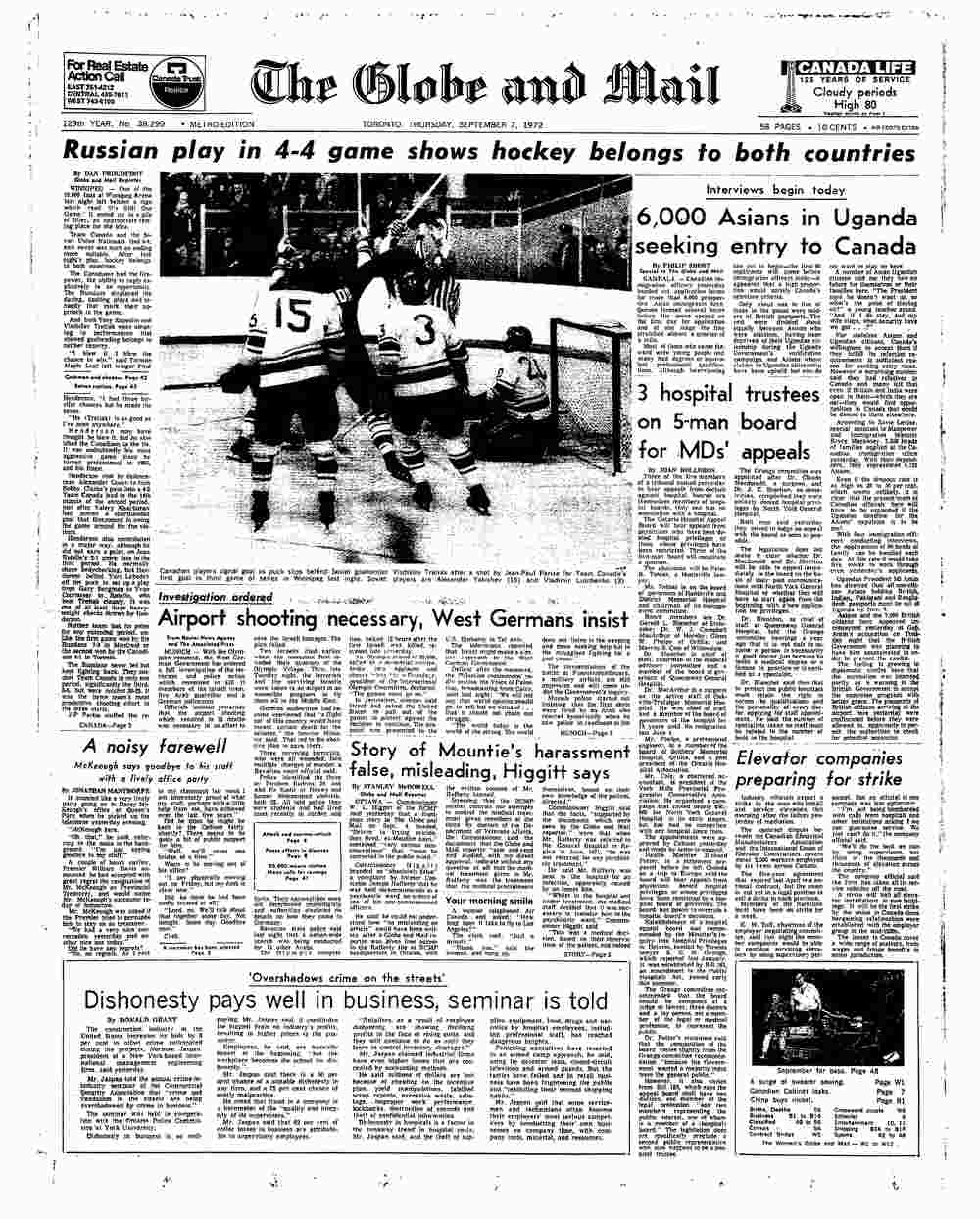1972 Summit Series National Historic Event

© Library and Archives Canada / Frank Lennon / e010933355
The 1972 Summit Series was designated as a national historic event in 2012.
Historical importance: a hockey series of eight games between Canada and the Union of Soviet Socialist Republics (USSR) held in September 1972.
Commemorative plaque: multiple plaque locations
Plaque location 1
This plaque will be installed at Former Montréal Forum, 2313 Sainte-Catherine Street West, Montréal, QuebecFootnote 1
1972 Summit Series
Here, at the former Montréal Forum, Game One of this unprecedented eight-game hockey series was played on September 2, 1972. Marking the first encounter between top Canadian professional players and the Soviet Union’s national team, the series aroused fervent passions in both countries as these two rivals, representing different styles of play, clashed on the ice. Millions of Canadians were riveted to their televisions, coming together to cheer for their team. In Moscow, Team Canada gained a dramatic come-from-behind series victory by scoring the winning goal with only 34 seconds left in the final game.
Plaque location 2
50 Carleton Street, Toronto, OntarioFootnote 2
1972 Summit Series
Here, at Maple Leaf Gardens, Game Two of this unprecedented eight-game hockey series was played on September 4, 1972. Marking the first encounter between top Canadian professional players and the Soviet Union’s national team, the series aroused fervent passions in both countries as these two rivals, representing different styles of play, clashed on the ice. Millions of Canadians were riveted to their televisions, coming together to cheer for their team. In Moscow, Team Canada gained a dramatic come-from-behind series victory by scoring the winning goal with only 34 seconds left in the final game.
Plaque location 3
This plaque has not been installed yet in WinnipegFootnote 1
1972 Summit Series
Game Three of this unprecedented eight-game hockey series was played at the old Winnipeg Arena on September 6, 1972. Marking the first encounter between top Canadian professional players and the Soviet Union’s national team, the series aroused fervent passions in both countries as these two rivals, representing different styles of play, clashed on the ice. Millions of Canadians were riveted to their televisions, coming together to cheer for their team. In Moscow, Team Canada gained a dramatic come-from-behind series victory by scoring the winning goal with only 34 seconds left in the final game.
Plaque location 4
This plaque has not been installed yet in VancouverFootnote 1
1972 Summit Series
Here, at the Pacific Coliseum, Game Four of this unprecedented eight-game hockey series was played on September 8, 1972. Marking the first encounter between top Canadian professional players and the Soviet Union’s national team, the series aroused fervent passions in both countries as these two rivals, representing different styles of play, clashed on the ice. Millions of Canadians were riveted to their televisions, coming together to cheer for their team. In Moscow, Team Canada gained a dramatic come-from-behind series victory by scoring the winning goal with only 34 seconds left in the final game.
The 1972 Summit Series

The 1972 Summit Series marked the first encounter between top Canadian professional hockey players and the Soviet Union’s national team. This unprecedented eight-game series between rivals was watched on television by millions of Canadians at home, school, and work, especially as the series came to its dramatic conclusion – a series-winning goal by Canada, scored with only 34 seconds left in the final game. This series was a defining moment that brought Canadians together to cheer for Team Canada, and ultimately saw Canada’s image abroad enhanced with its remarkable comeback victory. Taking place during the Cold War, the series was intense and brought out strong national feelings in both countries, as two differing ways of life and styles of hockey clashed on the ice.
While Canadians took great pride in believing that they had the best hockey players in the world, the Soviet Union had been developing an elite hockey program since the Second World War, producing a national team that dominated the sport at international competitions by the 1960s. When an eight-game series between Canada and the Soviet Union was announced for September 1972, it set the Soviets’ disciplined game, with its fast skating, crisp passing, and an emphasis on strategy, against the Canadians’ physical game, characterized by an emphasis on shooting, body-checking, and the dump and chase approach.

© The Globe and Mail

© The Globe and Mail
Despite Coach Harry Sinden’s warnings, the Canadians were confident of easy victory – but then the first game ended with a devastating 7-3 defeat at the Montréal Forum. Team Canada regrouped and won the second game (4-1) in Toronto but tied the third game in Winnipeg (4-4) and lost in Vancouver (5-3). Canadian media and fans were frustrated, shocked and angry. Some fans even booed the Canadian players, prompting captain Phil Esposito to make an impassioned speech to Canadians on national television. The next four games took place in Moscow. Team Canada lost the next game, 5-4, but rallied to win the Games 6 and 7 by scores of 3-2 and 4-3, with Paul Henderson scoring the winning goals in both games. Going into the final game, the series was tied. According to International Ice Hockey Federation rules, the Soviets, with their superior goal differential, could claim victory in the series if the game ended in a tie. Canada had to win! Going into the third period leading by a score of 5 to 3, the Soviets seemed assured of victory, but the Canadians showed heart, determination, and individual effort. Phil Esposito and Yvan Cournoyer scored to tie the game, and with only 34 seconds left, Paul Henderson scored the winning goal, with legendary announcers Foster Hewitt and René Lecavalier calling the game.
The series generated passionate nationalism in both Canada and the Soviet Union as thousands of Canadian fans travelled to Moscow to cheer for Team Canada, and many others sent telegrams which the players used to cover their dressing room walls. An estimated 15 out of 20 million Canadians tuned in to watch or listen to the games, and many schools and businesses set up television sets so that everyone could watch the final game, brought by satellite technology. Canadians cheered ecstatically when Paul Henderson scored the series winning goal for Canada, which some still consider the greatest moment in Canadian sports history.
Backgrounder last update: 2024-03-13
The National Program of Historical Commemoration relies on the participation of Canadians in the identification of places, events and persons of national historic significance. Any member of the public can nominate a topic for consideration by the Historic Sites and Monuments Board of Canada.
- Date modified :